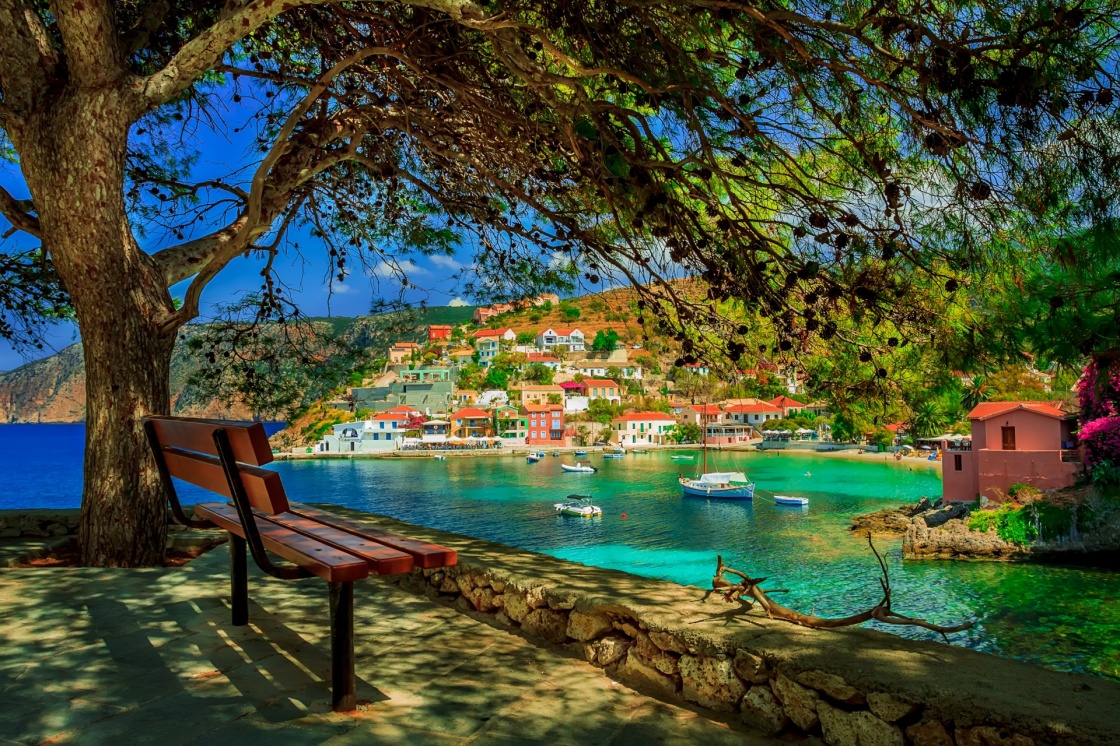As the largest island of the Ionian Sea and one with rich history and interesting geomorphology, there's definitely a lot to see in Kefalonia. You will find miracles of nature such as unique caves, lakes and lagoons along with an impressive coastline and peninsulas. Even though the island suffered the devastating earthquake in 1953, which destroyed a great number of important sites as well as most of the towns, there are still ancient ruins standing, whereas most of the findings are on display in the Archaeological Museum in Argostoli.
Kefalonia is renowned for its mysteries like the disappearing sea water in Katavothres and the mystical cave of Melissani. Katavothres is one of the most visited sights on the island since the sea water disappears through cracks near the shore. For years scientists could not explain this phenomenon and did not know where the water went. They eventually performed an experiment using a coloured chemical substance which they put in the water of the Katavothres. They found out that the water crossed the whole southern part of the island underground, forming holes in the limestone and ended up in the cave of Melissani.
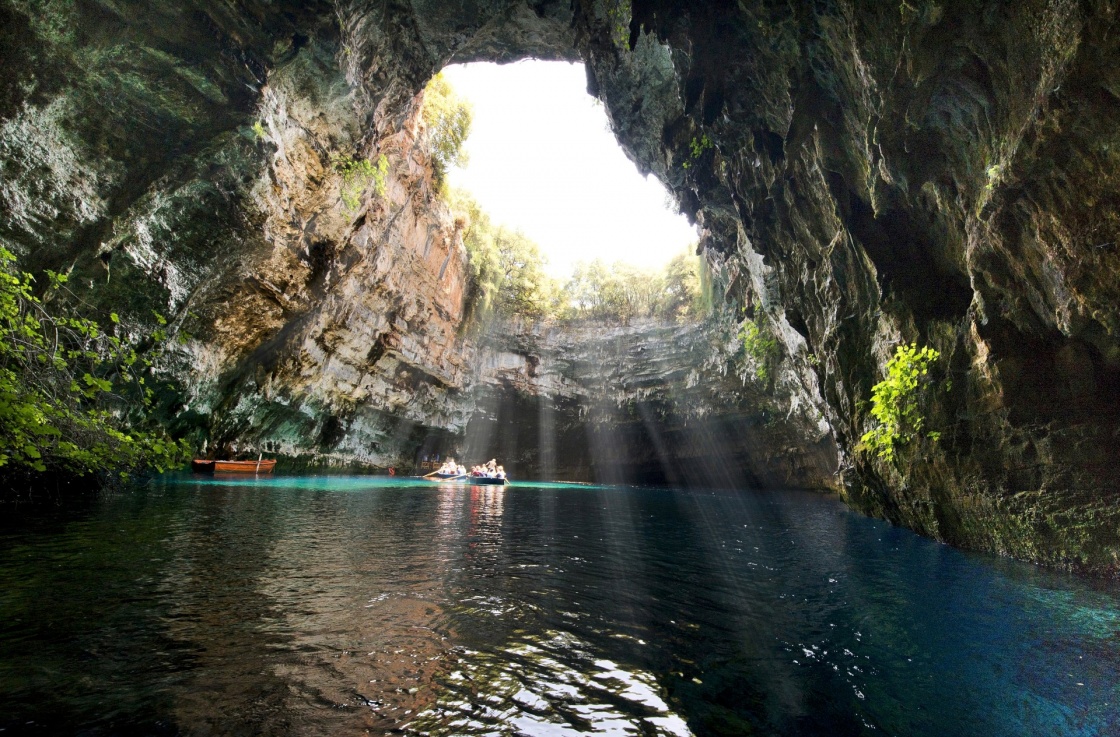
 'Famous melissani lake on Kefalonia island - Greece' - Piotr Krzeslak / Shutterstock
'Famous melissani lake on Kefalonia island - Greece' - Piotr Krzeslak / ShutterstockThis cave is located in Sami, in the east coast of the island and there is a blue lake in its centre. Ever since the roof of the cave collapsed and the sun rays reached the surface of the lake, the water reflected on the walls of the cave has been creating a mystical atmosphere, especially at midday. The discovery of ancient ruins showing that the cave was a sacred place dedicated to Pan, the ancient god, only added to this mystery. According to the legend, Melissanthi was a nymph who killed herself in the lake because Pan rejected her. Others say that Melissanthi was a local girl who drowned when she lost one of her sheep and accidentally fell into the lake when she was trying to find it.
Another cave near Sami and the cave of Melissani is the Drogarati cave. It was discovered 300 years ago after an earthquake revealed the main entrance. It is 60 metres deep, its temperature reaches 18 degrees Celsius and the humidity is 90%! The age of the cave has been estimated to 100.000.000 years and only a part of it is accessible. It is probably connected with other caves in the area and because of its great acoustics many cultural events have taken place here.
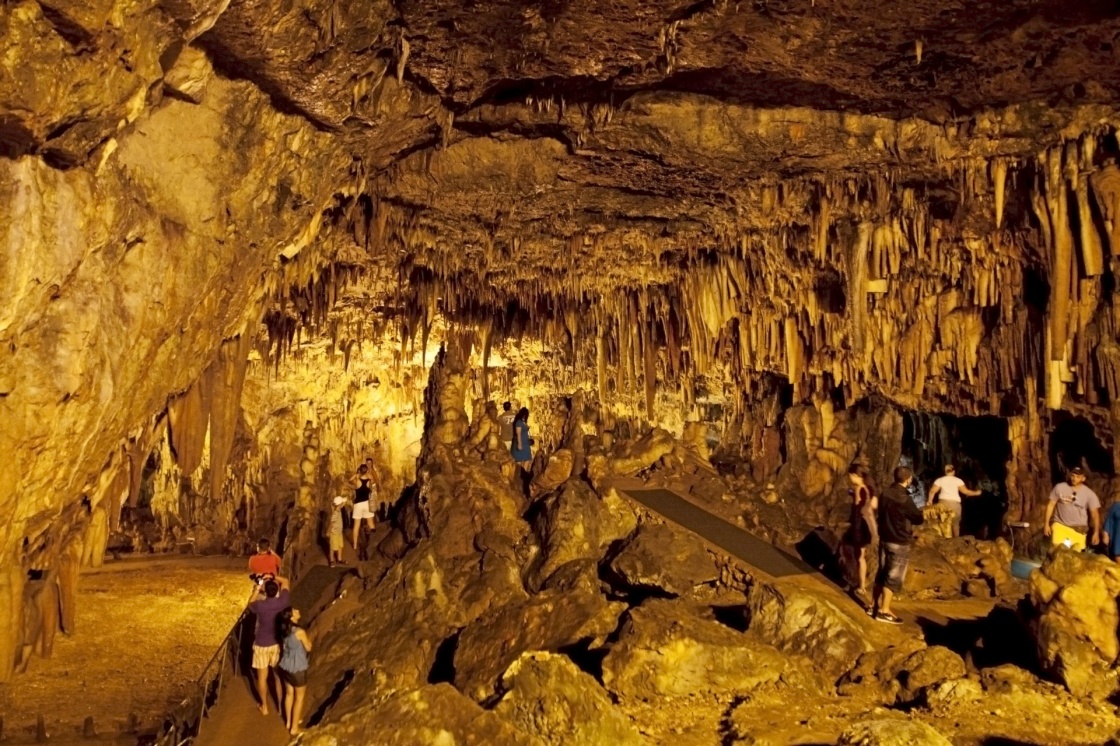
 'Cave Drogarati on Kefalonia, Greece' - crydo / Shutterstock
'Cave Drogarati on Kefalonia, Greece' - crydo / ShutterstockOther sights worth visiting in the island of Kefalonia are the castle of Agios Georgios, the Kipouraioi monastery and the De Bosset bridge in the lagoon of Koutavos.
\r
\rThe castle was built in the 13th century in order to fortify the then capital of the island which was located there. Because it was meant to prevent possible attacks, the view from there is absolutely breathtaking! It is well-preserved with loopholes, observatories, towers and part of the walls that are still standing. The Kefalonian nobles used to be buried there and it is allegedly connected with Argostoli via an underground tunnel.
\r
\rDe Bosset bridge was named after the British governor who was responsible for building it. It links the lagoon of Koutavos with the other side of the bay and it was built in order to make the access to the capital easier. Nowadays it is a pedestrian street.
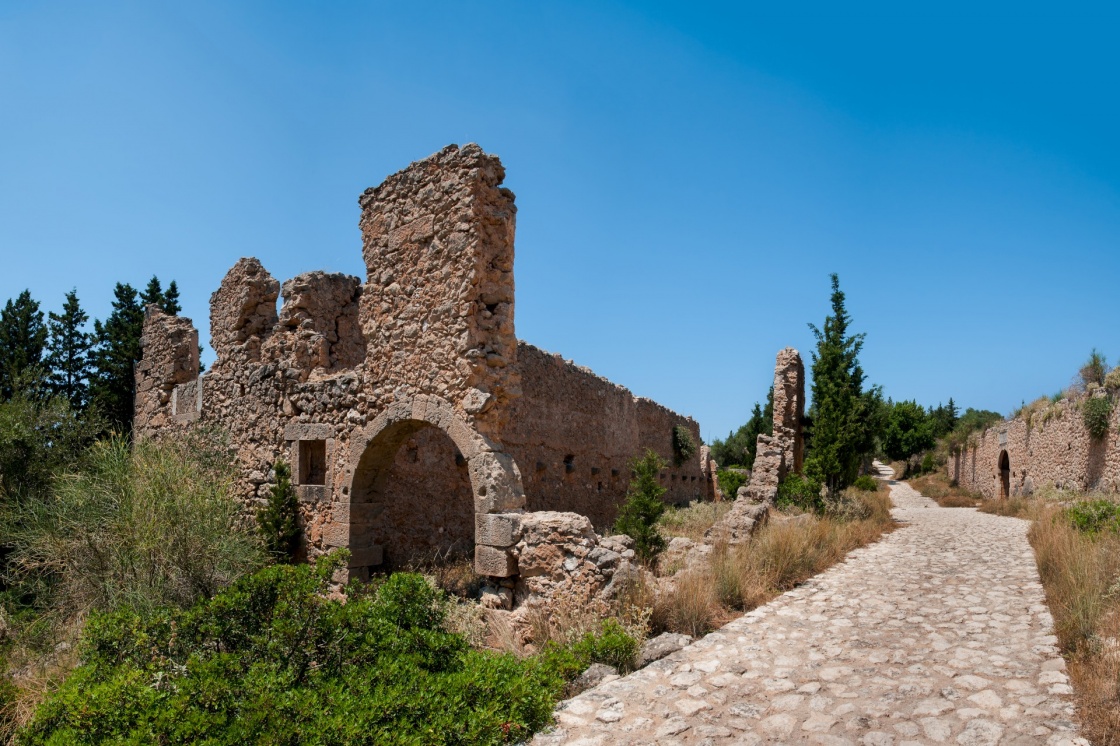
 'Assos Castle on the Island of Kefalonia in Greece' - Kestutis Zitinevicius / Shutterstock
'Assos Castle on the Island of Kefalonia in Greece' - Kestutis Zitinevicius / ShutterstockEven though Kipouraioi Monastery is not the only beautiful and historic monastery on the island, it is worth mentioning because today there is only one monk living there. He rebuilt most of the buildings of the monastery by himself after the French bombed it accidentally in 1915 and the earthquake destroyed what was left in 1953. The view from there is also amazing, as it is built on the edge of the rocks near the shore.
Kounopetra and the lighthouses of Agioi Theodoroi and Gerogompos are some more of the island's landmarks. The first one is a big rock near the village of Matzavinata which used to move rhythmically by itself. However, this stopped after the earthquake in 1953. Agioi Theodoroi is a lighthouse initially built by the British, but the local authorities rebuilt it according to the original architectural design after it was destroyed like most of the island during the catastrophic earthquake of 1953.
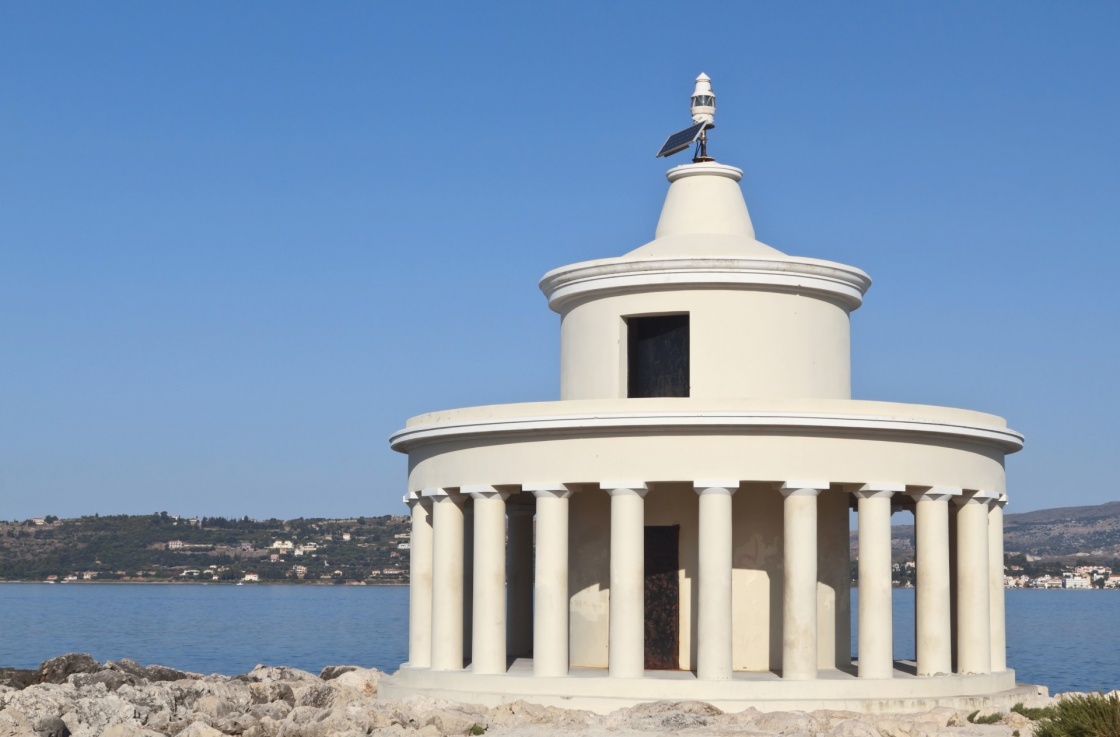
 'Lighthouse of St. Theodore at Argostoli of Kefalonia island in Greece' - Panos Karas / Shutterstock
'Lighthouse of St. Theodore at Argostoli of Kefalonia island in Greece' - Panos Karas / ShutterstockSome of the most important archaeological sites of the island are the ancient cities of Sami and Krani, the Mycenaean tombs and several ancient Greek temples.





